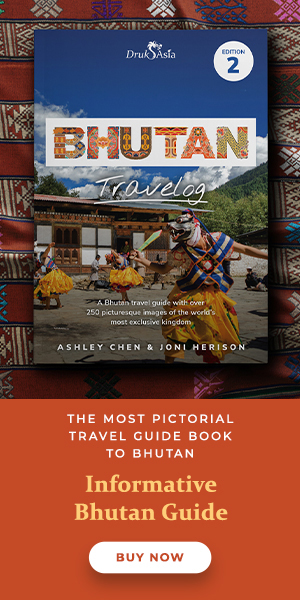BHUTAN
Travelog
Where to Find the Most Stunning Views in Bhutan

When you think of Bhutan, chances are your mind conjures images of snow-dusted Himalayan peaks, cliffside monasteries, and emerald valleys untouched by time. And you wouldn’t be wrong. But if you're wondering exactly where to go for the most jaw-dropping views in Bhutan, this guide will take you straight to the kingdom’s most scenic spots—some famous, others blissfully off the beaten track. Whether you're an avid trekker, a spiritual seeker, or a casual wanderer with a camera in hand, these locations promise a visual experience you’ll carry for life.
Paro Taktsang (Tiger’s Nest Monastery)
Let’s start with the showstopper. Clinging dramatically to a cliff 3,000 feet above the Paro Valley, Tiger’s Nest Monastery is arguably Bhutan’s most iconic image—and for good reason. The hike up is rewarding, offering increasingly sweeping vistas of pine forests, mountain ridges, and misty valleys. The final viewpoint just before reaching the monastery is simply sublime. Visit early in the morning for fewer crowds and magical morning light.
Best view from: the final lookout point before the descent into the monastery.

Dochula Pass (3,100m)
If panoramic Himalayan views are on your wishlist, make your way to Dochula Pass, a scenic high point between Thimphu and Punakha. On a clear day, you’ll be greeted with an uninterrupted view of Bhutan’s eastern Himalayas, including peaks like Masagang, Tsendagang, and Gangkar Puensum. The 108 chortens that dot the pass add a spiritual and photogenic charm to the landscape.
Best time to visit: early winter (Nov–Dec) for clear skies and snow-capped peaks.
Chele La Pass (3,988m)
The highest motorable pass in Bhutan, Chele La offers spellbinding views of Mt. Jomolhari and the Haa Valley. The drive itself is scenic, winding through dense spruce and rhododendron forests. On a crisp morning, you’ll see prayer flags fluttering wildly against the backdrop of Bhutan’s most sacred mountains. It’s the perfect spot for a picnic, photography, or just silent contemplation.
Tip: Bring warm layers—this place gets chilly even in summer.

Laya Village (3,800m)
Tucked deep in the north-western mountains, Laya is Bhutan’s highest settlement and home to the semi-nomadic Layap people. If you’re up for a multi-day trek (usually part of the Laya-Gasa or Snowman Trek), you’ll be rewarded with staggering views of Himalayan peaks, pristine alpine landscapes, and remote glacial rivers. It’s remote, raw, and utterly unforgettable.
Best for: seasoned trekkers and those seeking remote mountain culture.

TRAVEL TIP
The Royal Highland Festival is the best way to immerse yourself in the unique culture of Bhutan’s highland nomads. Held annually in Laya, this vibrant festival showcases traditional music, yak-based competitions, and the colourful attire of the Layap people—offering a rare glimpse into one of Bhutan’s most remote communities.
Phobjikha Valley
Known as Bhutan’s "valley of the cranes," Phobjikha offers a different kind of visual beauty. Instead of sharp peaks, think wide, glacial valleys, golden wetlands, and carpets of dwarf bamboo stretching as far as the eye can see. In winter, black-necked cranes arrive from Tibet, adding a mystical presence to this already tranquil setting. For photographers and nature lovers, it’s a must.
Best view from: Gangtey Monastery, perched on a ridge above the valley.
TRAVEL TIP
The best time to witness the majestic black‑necked cranes in Phobjikha Valley is from late October or early November through to mid‑February—sometimes extending into March. Aim for early morning or late afternoon, when their graceful flights and feeding rituals are most active. Don’t miss the Crane Festival on 11 November, timed with the cranes’ arrival. Bring binoculars and pack warm layers—winter temperatures can dip below freezing

Bumdra Campsite (3,800m)
If you're after a heavenly camping experience, Bumdra Trek is a short but scenic hike that rewards you with some of the most epic views in Bhutan. You’ll camp near a remote monastery with sweeping views of the Paro Valley, often above the clouds. And the next day, you’ll descend through forested trails to—surprise!—Tiger’s Nest. It's the perfect mix of serenity and spectacle.
Ideal for: those wanting a soft adventure with a spiritual twist.
The Most Popular Tour Package with Bumdra Trek
Royal Manas National Park Viewpoints
For something wild and offbeat, head south to Royal Manas National Park, one of the oldest protected areas in Bhutan. While it’s better known for its biodiversity (tigers, elephants, golden langurs), the park also offers stunning riverine views, dense forest canopies, and rare glimpses of lowland Bhutan’s natural beauty. Perfect for eco-travellers and birdwatchers.
Taktse Ridge, Trongsa
Few travellers make it here, but those who do are in for a treat. The Taktse Ridge, near Trongsa Dzong, offers sweeping views of central Bhutan’s valleys and ridgelines, especially stunning during sunrise or sunset. The trail near Taktse College is quiet, surrounded by blue pine and rhododendron forests, giving you that magical, undiscovered Bhutan vibe.

Ura Valley, Bumthang
Ura is the highest valley in Bumthang and perhaps the most scenic, with quaint clusters of traditional homes, barley fields, and cloud-draped mountain passes. It’s less touristy than other parts of Bumthang, giving you an authentic window into rural Bhutanese life—and some postcard-worthy scenery too.
Don’t miss: the drive from Ura to Thrumsingla Pass, one of Bhutan’s highest roadways.

Bhutan isn’t just a place you visit—it’s a place you feel. And these stunning viewpoints? They’re not just pretty backdrops; they’re invitations to pause, breathe, and take it all in. Whether you’re gazing at peaks that seem to scrape the sky or standing in silent valleys lit by morning mist, each view tells a story of Bhutan’s untouched soul. So pack your walking shoes, charge your camera, and keep your heart open—the Land of the Thunder Dragon has views that will stay with you long after you’ve returned home.
FAQs: Where to Find the Most Stunning Views in Bhutan
Q: What’s the best season for clear views in Bhutan?
A: Autumn (Sept–Nov) and spring (Mar–May) offer the clearest skies and the best mountain visibility.
Q: Do I need to hike to access these viewpoints?
A: Not all. Places like Dochula and Chele La are accessible by car. Others like Tiger’s Nest or Bumdra require a bit of hiking.
Q: Can I visit all these spots in one trip?
A: It depends on your itinerary length. A 10–14 day trip can comfortably cover Paro, Thimphu, Punakha, Phobjikha, and Bumthang.
Follow Druk Asia on social media for inspiring travel stories, breathtaking photos, and the latest updates from Bhutan.
Ready to Experience the Magic of Bhutan?
Fill in the form below and the friendly Bhutan Travel Specialist team will get back to you with expert advice, itinerary ideas, and everything you need to know. No obligations, just warm guidance from those who know Bhutan best.
Thank you for your message!
Hang tight—one of our friendly Bhutan Travel Specialists from Druk Asia will be reaching out soon with expert tips, insider advice, and exciting itinerary ideas to help you plan the adventure of a lifetime!
Discover
Breathtaking
Bhutan.
Thank you for subscribing!
You have successfully subscribed to our newsletter.




